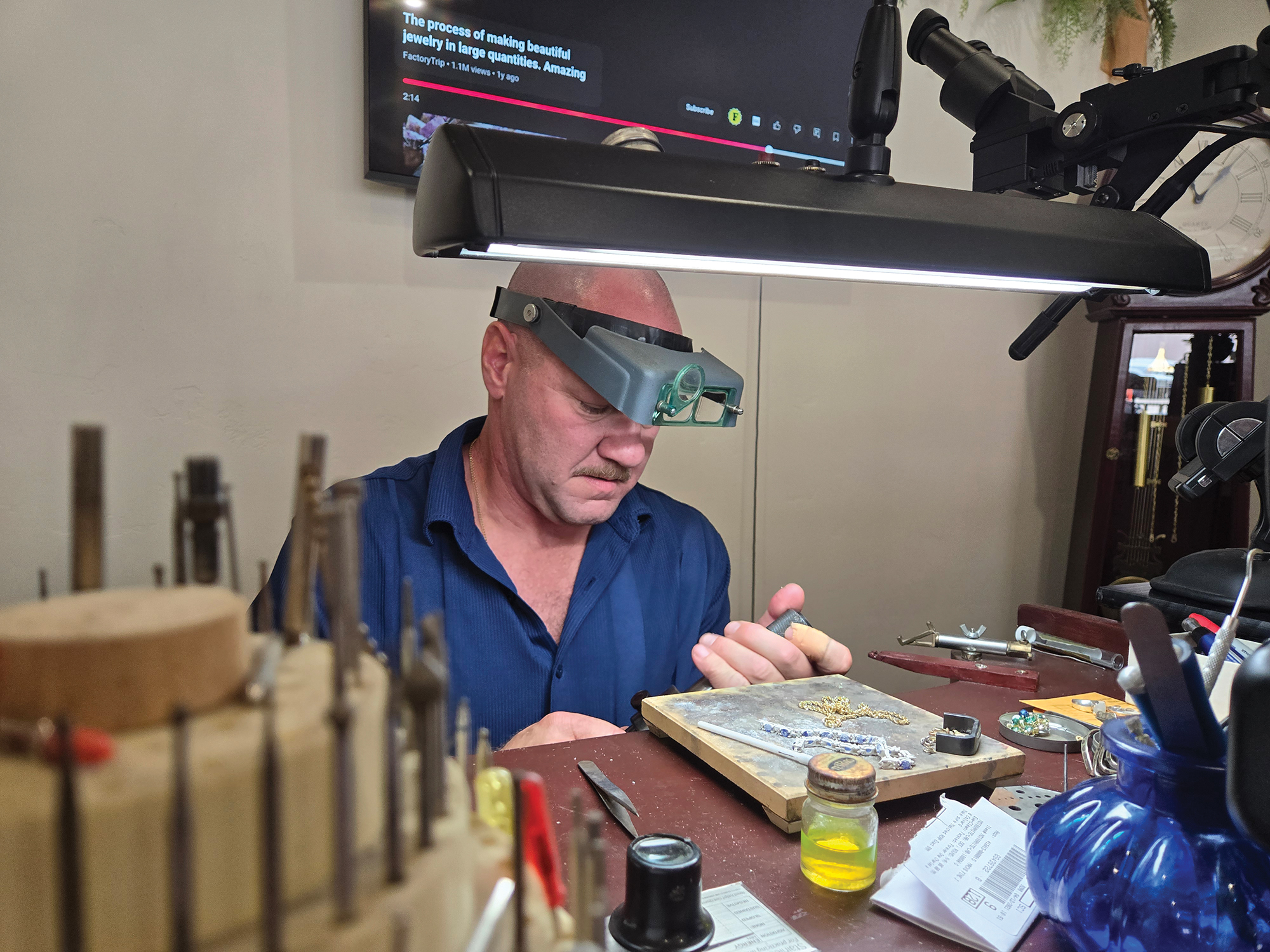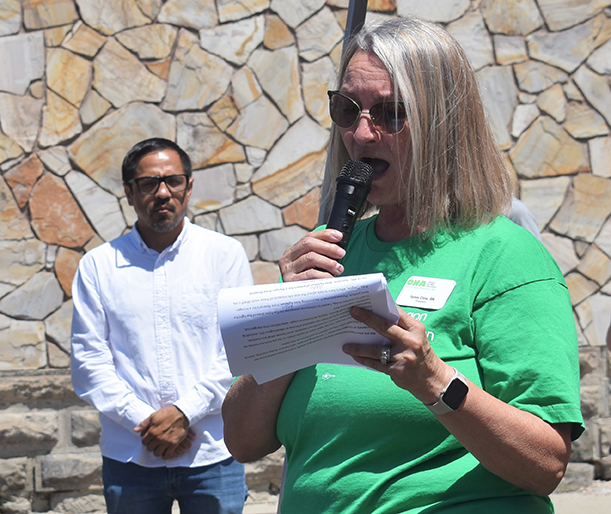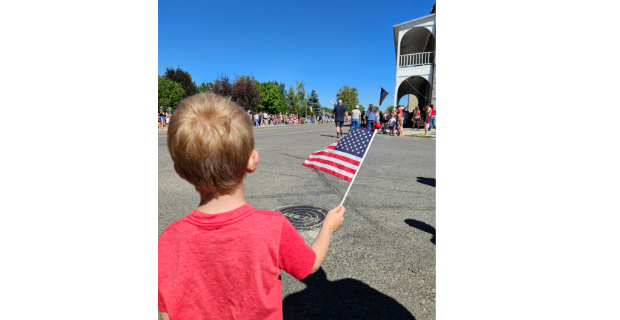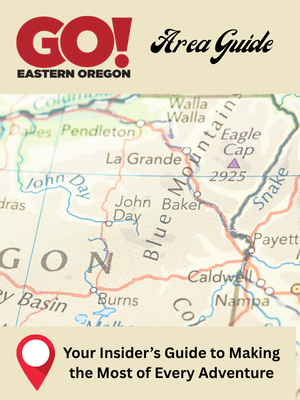Rustic Forest Service cabins available for rent
Published 12:00 am Thursday, April 27, 2006
By JAYSON JACOBY
Of the Baker City Herald
So you want to swap cell phones and your favorite TV shows for a few nights in a hand-hewn log cabin way back in the woods, but you’re afraid the only thing you can split with an axe is your foot.
Or some more vital area of your anatomy.
The U.S. Forest Service offers a much simpler and safer solution:
Rent one of the agency’s rustic cabins in Northeastern Oregon.
How rustic are they? Well, suffice it to say you could film an episode of “Grizzly Adams” at most of them.
And the only things you’ll have to chop are the vegetables on your dinner menu.
The Wallowa-Whitman National Forest started renting cabins in the early 1990s.
The forest has opened as many as nine structures; this year five are available, although some won’t open until summer, said Dan Ermovick, the Wallowa-Whitman’s recreation, wilderness and trails coordinator.
(Three other cabins, at the Fremont Powerhouse complex on the Umatilla National Forest near Granite, actually are closer to Baker City than two of the Wallowa-Whitman’s rentals.)
“It’s been very successful very popular,” Ermovick said of the rental program.
During federal fiscal year 2004 (Oct. 1, 2003, to Sept. 30, 2004) visitors reserved the Wallowa-Whitman’s cabins for a total of more than 300 nights. The forest collected $29,346 in rental fees that year.
The previous fiscal year the rental cabins earned $25,540.
The forest keeps 95 percent of the money, spending 80 percent to maintain and improve the cabins, and 15 percent to collect fees and process paperwork, Ermovick said.
Over the past three years, for instance, the Wallowa-Whitman has, among other tasks, painted the kitchen at Antlers Guard Station near Whitney, installed a water treatment system at Two Color Guard Station near Eagle Creek, and replaced porch logs at the guard station on the north shore of Anthony Lake.
The forest also tests drinking water at rental cabins each year (those cabins that have drinking water, which is not all of them), and inspects propane-powered heaters, cookstoves and refrigerators to ensure they’re safe.
Although the accommodations range from primitive (outhouses) to coddling (heated showers), renters seem to prefer the more remote, what you might call rough, cabins, Ermovick said.
A few years ago, for example, the Wallowa-Whitman opened Hudspeth Guard Station, in Sumpter Valley just west of Phillips Reservoir.
But renters shunned the place, which isn’t a log cabin but rather a 1950s ranch-style house that looks as if it belongs on a suburban street.
Wallowa-Whitman officials dropped Hudspeth from the rental list after a couple years. The same fate befell three other guard stations, Ermovick said: Lily White near Eagle Creek, Boundary near Granite, and Moss Springs near Cove.
Meanwhile, Peavy Cabin, which lacks many of the Hudspeth house’s amenities, including electricity and running water, but positively exudes rusticity, remains a popular destination.
In 2005, renters reserved Peavy Cabin on 67 nights slightly more than half the 123 nights it was available (Peavy is open from July through October).
“People seem to want more of a cabin setting, and a place to really get away from things,” Ermovick said. “They want to know, ‘where can I go that I can’t use a cell phone.’ “
Cell phone reception is spotty at best at Peavy Cabin.
And cable TV? High-speed Internet access?
Surely you jest.
But then you’re not likely to get to watch elk graze while you sip your breakfast coffee and gnaw on a stale bagel in a motel room, either.
Most cabins several decades old
Most of the rental cabins on the Wallowa-Whitman were assembled more than half a century ago from trees felled nearby.
Back then, before the post-World War II housing boom spurred the demand for lumber, the dense network of national forest logging roads we’re accustomed to didn’t exist.
In those days Forest Service employees often had to hike or ride a horse for many miles to their work sites, which made it impractical even impossible in some cases for employees to return to their town headquarters every evening.
And so the agency built cabins, typically called guard stations, out in the woods so workers didn’t have to travel so far.
By the 1970s, however, the Forest Service had built enough roads that employees could get to most parts of national forests even huge ones like the Wallowa-Whitman, the biggest in the Northwest at 2.4 million acres within a few hours.
The proliferation of roads rendered the guard stations obsolete, and the Forest Service razed most of them.
But some stations survived the purge, and in the early 1990s the Forest Service, prompted by its own employees and by people outside the agency who wanted to preserve the historic structures, started renting not only cabins, but also fire lookouts.
(The Wallowa-Whitman still uses its few remaining lookouts, so they’re not available to renters.)
This one-room, 390-square-foot log building is on the west slopes of the Elkhorn Mountains, about 55 miles (by road) from Baker City.
Peavy Cabin is open from July 1 through Oct. 31.
The Wallowa-Whitman rented the cabin year-round for several years, but officials decided it cost too much to keep the place clean and stocked with firewood during winter, Ermovick said. Snowplows don’t venture within 10 miles of Peavy Cabin, so simply getting there can be quite an expedition any time between November and May.
Workers from the Civilian Conservation Corps, one of President Franklin Roosevelt’s public works programs that employed young men during the Great Depression, built the cabin in 1934 for Dr. George Wilcox Peavy, dean of the School of Forestry at Oregon Agricultural College (now Oregon State University).
Peavy and his students used the cabin as a base camp for their work in the nearby forests.
Peavy Cabin is in a meadow beside the North Fork John Day River.
Forest Service carpenter Larry Bilyeu restored the cabin in the early 1990s. Bilyeu replaced several rotted foundation logs and discarded the metal roof in favor of more architecturally appropriate cedar shingles.
The Sloans Ridge fire surrounded the cabin in August 1996, but firefighters sprayed fire-retarding foam on the structure to save it.
COST: $45 per night
CAPACITY: Four people
RENTAL SEASON: July 1-Oct. 31
AMENITIES: Fireplace, wood stove, sink, table, beds, propane-powered refrigerator, stove and lights; horse corral. There is no running water, electricity or indoor plumbing.
WHAT TO DO: Hiking in the North Fork John Day Wilderness (the boundary is less than a quarter mile from the cabin); hunting (archery season runs from late August through late September).
AVAILABILITY: As of this week, Peavy Cabin had been reserved for the following periods: July 1-14, July 20-28, Aug. 3-12, Aug. 20-30, Sept. 1-8
Like Peavy Cabin, this log structure on the north shore of Anthony Lake about 34 miles northwest of Baker City, was built in the 1930s by the Civilian Conservation Corps.
Anthony Lake Guard Station is open May 1-Oct. 31 (it’s not available the rest of the year because it serves as the Nordic ski center for Ski Anthony Lakes resort).
In 2005 the guard station was occupied on 73 nights about 40 percent of the nights it was available.
COST: $80 per night
CAPACITY: Eight people
RENTAL SEASON: May 1-Oct. 31
AMENITIES: Three bedrooms, propane fireplace, electric range, refrigerator and lights, running water in kitchen and bathroom.
WHAT TO DO: Hiking, hunting, fishing, mountain biking but expect snowdrifts until late June or early July
AVAILABILITY: As of this week, Anthony Lake Guard Station had been reserved for the following periods: May 5-6, 28-29; June 15-17, 22; July 10-15, 17-18, 20-30; Aug. 1-14, 18-20, 24-26; Sept. 1-3, 7-9; Oct. 9
Yet another Civilian Conservation Corps-constructed cabin, Antlers stands on the west bank of the North Fork Burnt River about two miles south of Highway 7 at Whitney.
Antlers is open year-round.
Hunters often rent the cabin during the fall, and it’s popular during winter (snowmobiling, snowshoeing, cross-country skiing) and during summer, said Bonnie Clugston, who works for the Wallowa-Whitman.
During 2005 Antlers was reserved about one night in every three 120 nights in all.
COST: $45 per night
CAPACITY: Six people
RENTAL SEASON: Year-round in 2006; April 23-Dec. 31 in 2007, April 21-Dec. 30 in 2008
AMENITIES: Two rooms, double futon, two bunkbeds, drinking water from a hand pump, propane cooking stove and lights. This spring the Forest Service plans to replace the cabin’s wood stove with a propane heating stove.
WHAT TO DO: Hiking, hunting, fishing, mountain biking
AVAILABILITY: As of this week, Antlers Guard Station had been reserved for the following periods: May 12-13, 26-29; June 2-3, 6-7, 18-19; July 2-9; Sept. 7-10.
This is the largest of the rental cabins on the Wallowa-Whitman, with more than 1,000 square feet of space and accomodations for as many as 12 people.
Two Color stands along Eagle Creek, just south of the Eagle Cap Wilderness.
Like Antlers, Two Color is available year-round. Unlike Antlers, you can’t drive right to Two Color during the winter because the road isn’t plowed.
COST: Non-peak season (through April 30): $60 per night, plus $10 per person if more than four people); Peak season, May 1 through Sept. 30: $80 per night, plus $10 per person if more than four people
CAPACITY: 12 people
RENTAL SEASON: Year-round
AMENITIES: 10 folding cots, one twin bed, flush toilets and heated shower (in summer), propane lights, heating stove, refrigerator, cook stove.
WHAT TO DO: Hiking, hunting, fishing, mountain biking
AVAILABILITY: As of this week, Two Color Guard Station had been reserved for the following periods: May 26-29; June 5-8, 15-19, 23-24, 30; July 1-3, 7-9, 11-14, 17-22, 29-31; Aug. 1-9, 11-17, 19-31; Sept. 1-9, 14-22; Oct. 23-29
CHRISTMAS CREEK CABIN
This cabin, along the Snake River in Hells Canyon, is the most remote, and most expensive, of the rental cabins in the region.
To get to Christmas Creek you’ll need either a jetboat or a rubber raft, or you can hike in on the Snake River Trail. The boat moorage is poor, however, and the Forest Service is not liable for damages to boats or other equipment that could happen if the river rises or falls.
It
COST: $100 per night for up to six people, $10 for each additional person up to 24; minimum fee of $300 per group
CAPACITY: 10 inside the cabin, plus camping space outside for up to 14 more people
RENTAL SEASON: Year-round, although cabin might not be available if workers are making improvements
AMENITIES: Dining room, kitchen with sink, two bedrooms, propane heat and lighting, propane range/oven. There is no running water or refrigerator; only one outhouse.
WHAT TO DO: Hiking, fishing, boating on the Snake River.
AVAILABILITY: Call the Hells Canyon National Recreation Area at 509/758-0616.
FREMONT POWERHOUSE
This site on the Umatilla National Forest about six miles west of Granite includes three rental houses, each near the Fremont Powerhouse, an historic structure built in 1908 to supply electricity to nearby mines.
The Powerhouse produced its final watt in 1967, and the next year the California-Pacific Utilities Co. donated the site, which includes the rental houses where powerhouse workers once lived, to the Forest Service.
The rental houses range in size from the three-bedroom Congo Gulch cabin to the two-bedroom Miners Retreat to the one-bedroom Hilltop Hideaway.
COST: Congo Gulch cabin: $40 during non-peak season, Jan. 1-May 31 and Oct. 1-Dec. 31; $60 during peak season, June 1-Oct. 1; Miners Retreat: $30 during non-peak season, $50 during peak season; Hilltop Hideaway: $20 during non-peak season, $30 during peak season.
CAPACITY: Congo Gulch cabin, six people; Miners Retreat, four people; Hilltop Hideaway, two people.
RENTAL SEASON: Year-round; although the final 1 1/2 miles of road from Granite might be blocked by snow until May.
AMENITIES: Drinking water, flush toilets and showers are available during the peak season only, June 1-Oct. 31.
WHAT TO DO: Hiking, mountain biking, hunting, fishing and boating at Olive Lake, about six miles to the west.
AVAILABILITY: As of this week, Congo Gulch Cabin had been reserved for the following periods: May 25; June 22-24, 30; July 1-4, 9-13; Sept. 29-30; Oct. 1-10; Nov. 17-24; Miners’ Retreat was reserved for July 9-13, 17-21; Oct. 6-9, 23-29; Hilltop Hideway was reserved for May 26-28; June 19-21; July 9-13; Oct. 4-10.









